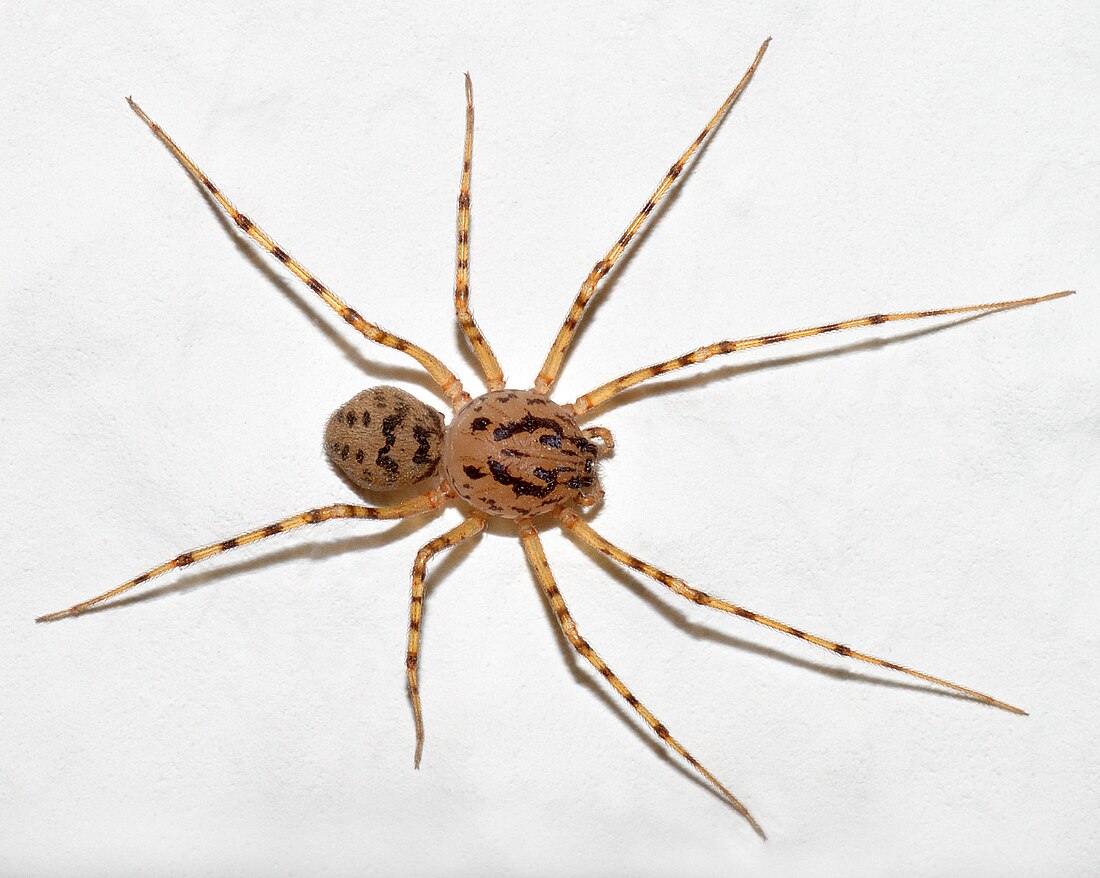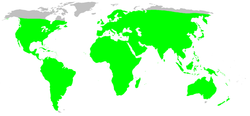Top Qs
Timeline
Chat
Perspective
Spitting spider
Family of spiders From Wikipedia, the free encyclopedia
Remove ads
Spitting spiders are a family of araneomorph spiders, the family Scytodidae, first described by John Blackwall in 1864.[2] It contains over 250 species in five genera,[1] of which Scytodes is the best-known.
Remove ads
Description
Scytodidae spiders are haplogyne, meaning they lack hardened female genitalia. They have six eyes, like most spiders in this group, arranged in three pairs. They possess long legs and a dome-shaped cephalothorax, and are usually yellow or light brown with black spots or marks. Their domed head and three eye groups tend to resemble a human skull, giving them the occasional common name "skull spiders".[3][4]
Remove ads
Hunting technique
Scytodidae catch their prey by spitting a fluid that congeals on contact into a venomous and sticky mass. The fluid contains both venom and spider silk in liquid form, though it is produced in venom glands in the chelicerae. The venom-laced silk both immobilizes and envenoms prey such as silverfish. In high-speed footage the spiders can be observed swaying from side to side as they "spit", catching the prey in a criss-crossed "Z" pattern; it is criss-crossed because each of the chelicerae emits half of the pattern. The spider usually strikes from a distance of 10 to 20 millimetres (0.39 to 0.79 in) and the entire attack sequence only lasts 1/700th of a second.[5] After making the capture, the spider typically bites the prey with venomous effect, and wraps it in the normal spider fashion with silk from the spinnerets.[6]
Remove ads
Pre social behaviour
Some species exhibit presocial behaviour, in which mature spiders live together and assist the young with food.[7]
Genera
- female Scytodes elizabethae
- female Scytodes fusca
As of October 2025[update], this family includes four genera:[1]
- Dictis L. Koch, 1872 – Seychelles, Asia, Pacific Isles, tropical Asia. Introduced to Mexico, United States
- Scyloxes Dunin, 1992 – Tajikistan, Malaysia, Thailand
- Scytodes Latreille, 1804 – Africa, Asia, southern Europe, North to South America, Australia, New Guinea. Introduced worldwide
- Stedocys Ono, 1995 – China, Japan, Malaysia, Thailand
Remove ads
See also
References
External links
Wikiwand - on
Seamless Wikipedia browsing. On steroids.
Remove ads






